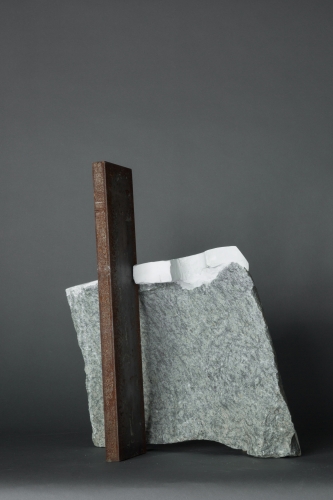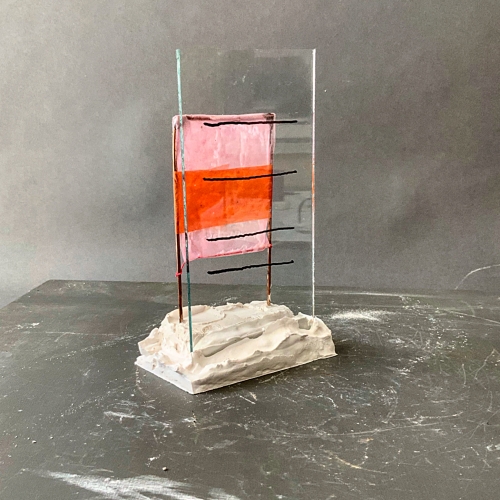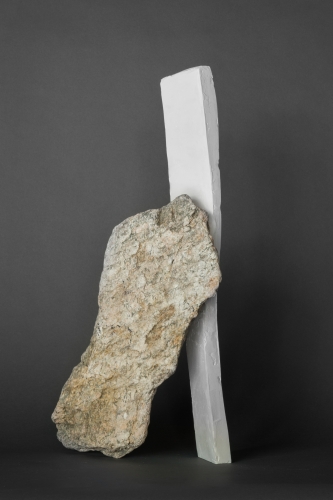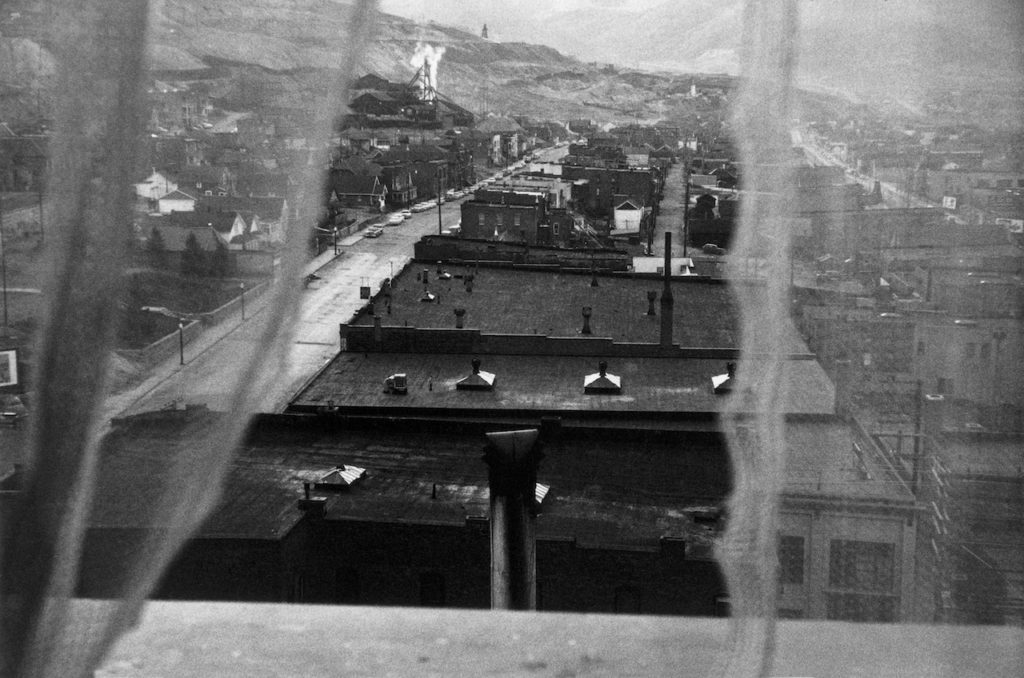It is neither too difficult nor unreasonable, at this particular moment in time, to imagine a dramatic or catastrophic shift in our landscape that shuttles us into a new epoch. But what is left over after the event and who finds what is left?—Broken foundations, pieces of larger structures that no longer exist, colors stripped or faded away. Just like that, a new antiquity is formed. When looking at Mark Webber’s sculptures, which often take form as objects made from interlocking shapes, there is a sense that the parts which comprise the work are made from pieces of greater structures, a vision of what is left. Webber makes use of a combination of hand sculpted and ready-made, found materials to build his monochrome, architectural constructions (Webber sites Luis Barragan’s Emotional Architecture as an influence). His minimal formations often make use of hydrocal—a mixture of plaster and cement which appears almost like ceramic or stone—-as primary material which he then mingles or fastens with glass, wood, steel and sometimes string. The white sculptures lend a cycladic air. His studio which is so heavily populated by the work, appears like a small, dream-like city, a visible nod to Atelier Brancusi.
Webber’s sculptures are just as gestural as they are structural; there is a push and pull between calculation and happenstance. In them an, intrinsic harmony exists—like pieces from varying puzzles that have somehow slipped (or wedged) into peaceful accord. In Webber’s sculptures, modernism’s sharp, clean edges and hard angled forms have been blunted and weathered as if by the elements. (Webber is a devoted sailor and paddler and a nautical note is present).
It is compelling to consider Webber’s background as a cabinet maker and furniture designer in relation to his art objects which visibly share some lineage with functional design. While Webber’s sculptures lend an air of function, as viewers, we are not able to gather what that function might be, and that is not the point.
– Eliza Callahan



















